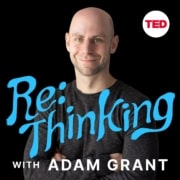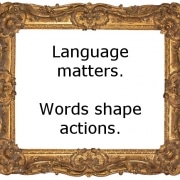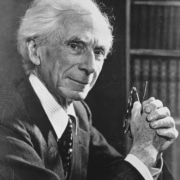Is Creative Talent Critical to Ethical Systems Design?
 In March, Ethical Systems hosted its second “Ethics by Design” conference. It showcased not just the expertise of top behavioral-science researchers and business practitioners, but also the challenges—both empirical and managerial—that they face in redesigning organizations to function more ethically. As social psychologist Jon Haidt, the Founding Director of Ethical Systems, said in his closing remarks, “At the end of the day, I have a much greater appreciation of just how hard it is to make good systems.” The trouble, of course, is the human being. Since our behavior can be hard to understand and predict, psychological knowledge, Haidt said, is crucial: “Any system that’s designed that doesn’t take human nature into account—a really deep understanding of human nature—is likely to become a monstrous system.”
In March, Ethical Systems hosted its second “Ethics by Design” conference. It showcased not just the expertise of top behavioral-science researchers and business practitioners, but also the challenges—both empirical and managerial—that they face in redesigning organizations to function more ethically. As social psychologist Jon Haidt, the Founding Director of Ethical Systems, said in his closing remarks, “At the end of the day, I have a much greater appreciation of just how hard it is to make good systems.” The trouble, of course, is the human being. Since our behavior can be hard to understand and predict, psychological knowledge, Haidt said, is crucial: “Any system that’s designed that doesn’t take human nature into account—a really deep understanding of human nature—is likely to become a monstrous system.”
If you want to avoid implementing a monstrous system, one place to start is “How to Design an Ethical Organization,” a recent piece, in the Harvard Business Review, by Nicholas Epley and Amit Kumar. Epley, an Ethical Systems collaborator, is a behavioral scientist at the University of Chicago Booth School of Business; Kumar is a marketing and psychology researcher at the University of Austin, Texas. In their view, any organization needs to concern itself with at least four crucial design features to be ethical: explicit values, thoughts during judgment, incentives, and cultural norms. Epley and Kumar show, with a range of studies, how each of these shapes an organization’s ethical character.
Take explicit values. Organizations typically announce these in their mission statements. “A mission statement should be simple, short, actionable, and emotionally resonant,” Epley and Kumar say. But that’s easier uttered than realized. “Most corporate mission statements today,” they say, “are too long to remember, too obvious to need stating, too clearly tailored for regulators, or too distant from day-to-day practices to meaningfully guide employees.” Not fit to the purpose, in other words, that they can—and should—have. A mission statement “must undergird not only strategy,” Epley and Kumar say, “but policies around hiring, firing, promoting, and operations so that core ethical principles are deeply embedded throughout the organization.”
Patagonia, for example, now claims to take the threat of climate change as an organizing principle of its business, a result of its longtime mission: “Build the best product, cause no unnecessary harm, use business to inspire and implement solutions to the environmental crisis.” Contrast that with some of the worst mission statements, like, “To create a shopping experience that pleases our customers; a workplace that creates opportunities and a great working environment for our associates; and a business that achieves financial success.” Yawn. An experiment Epley and Kumar cited demonstrated that how a game is described—“Wall Street” versus “Community”—can have an impact on how it is played, even when the rules are exactly the same. The way organizations formulate their mission statements can have a similar impact. And, as Epley and Kumar show, the same goes for the cultural norms, incentives, and the thoughts during judgment organizations create or encourage.
For business leaders, having this sort of helpful research, and policy examples worth emulating from companies like Patagonia—it created a standardized metric to evaluate the environmental impact of its entire supply chain, Epley and Kumar note—in hand is one thing. It may be another challenge altogether to envision how to wholly transform an old company, or create a new one, that is ethical to its core. After all, these are challenges that call for creative solutions: It takes some imagination to come up with compelling and effective mission statements. Designing new norms and incentives that produce ethical outcomes—a form of social innovation—does, too.
Even if “social innovation is not synonymous with creativity in other domains, the arts and sciences, for example, it does seem to involve many of the same mechanisms found to influence the production of new ideas in other fields of endeavor,” wrote psychologist Michael Mumford, in a case study of some of the social innovations Benjamin Franklin introduced. One has to be able to rethink, in other words, how companies can operate, and be structured, in substantially different ways—and certain people may be better at that than others.
At least, that’s the conclusion from a study published in March in the Journal of Personality and Social Psychology. Meghan Meyer, now director of the Dartmouth Social Neuroscience Lab (she was a Princeton postdoctoral fellow at the time of the study) and her colleagues wanted to see what psychological and neural mechanisms are responsible for creative imagination—that is, the capacity to imagine situations transcending the here and now. The idea is, the more remote scenarios become in time, place, perspective, or probability, the harder they are to conceive. Successful “distal simulation,” as the researchers call it, is an ability creative types are supposed to be good at, compared to people not engaged in creative professions or pursuits, and that’s what they found.
“Performance on a traditional measure of creativity (Study 1) and real-world success in creative pursuits (Study 2) corresponded with more vivid distal simulations across temporal, spatial, social, and hypothetical domains,” they wrote. In a third study, the researchers put their participants in an fMRI to see what, in their brains, accounted for the creative participants’ success in distal simulation. One group had 27 creative experts, some being MacArthur Fellows, Guggenheim award recipients, and Sundance Screenwriting Award winners (13 writers and 14 directors/actors in total, with 15 males and 12 females). The other group had 26 “controls” (10 financial, 10 medical, and 6 legal professions in total, with 15 males and 11 females).
The researchers found that the creative and (non-creative) control group recruited the same brain region, the medial prefrontal cortex, when they were simulating commonplace situations, like what to eat tomorrow or the thoughts of a friend. The purpose of the medial prefrontal cortex, according to a 2012 paper in Neuron, is “to learn associations between context, locations, events, and corresponding adaptive responses, particularly emotional responses.” Things changed when the participants imagined distal scenarios. The creative group, but not the control group, preferentially engaged a distinct neural mechanism, the dorsomedial subsystem of the default mode network, which, the researchers note, is consistently associated with imagining others’ intentions and personality traits, but also with disparate processes, like comprehending narratives; representing distance physically, temporally, and socially; grasping concepts; and making high-level construals, or abstractions.
“Indeed,” Meyer and her colleagues wrote in their new study, “abstraction may be the thread that ties creativity to distal simulation skills, as construing events and objects abstractly also momentarily increases creativity.” She also pointed to the importance of distal simulations in solving societal problems. “Many of the problems facing our society today, whether it be identifying solutions to address climate change or working with others who may have different political views, are essentially challenges that require distal thinking,” she said, in a press release. “They demand that you get outside of your present point of view and try to think about how things could be different from your immediate experience.”
Distal thinking arguably comes into play in putting ethical design into practice. “A leader designing an ethical culture should try to create contexts that keep ethical principles top of mind, reward ethics through formal and informal incentives and opportunities, and weave ethics into day-to-day behavior,” Epley and Kumar say. Creating those contexts—ones that, as they say, make “being good as easy as possible”—requires imagining scenarios relatively distant to what is commonly found in most companies today.
But you don’t necessarily have to have Academy Award artist-level talent, or even be a creative professional, to come up with an ethical systems design. As a 2014 Frontiers in Human Neuroscience review article, titled “Creativity—the unconscious foundations of the incubation period,” put it, “Creativity is not limited to the realms of greatness, but can also be found in daily life…” Anecdotes of people hitting on creative solutions usually take the same form: First someone studies a problem vigorously—for weeks, months, maybe years—and then, during some period of idleness or engagement in some other task, an idea arrives. Research shows that sound sleep and an openness to daydreaming matter—“a period of incubation indeed helps creativity”—provided these are combined with thoughtful research and analysis. (And, in case you’re wondering, psychedelics unfortunately don’t appear to be enough to generate useful new ideas, either.)
There’s no avoiding it: Wracking your brain on a problem is crucial, the authors of the Frontiers review wrote. That “conscious processing is needed to establish a knowledge base, to know what problems to tackle, and to verify and implement new ideas.” That should come as a relief to anyone interested in the prospect of designing more ethical organizations. Though ethical cultures are a relatively “distal” phenomenon, even a moderately creative person, who steeps themselves in the problem for a long time and is able to step back and consider human behavior from different vantage points, can figure out how ethical design works and where it fails.
Brian Gallagher is Ethical Systems’ Communications Director. Follow him on Twitter @brianga11agher.








